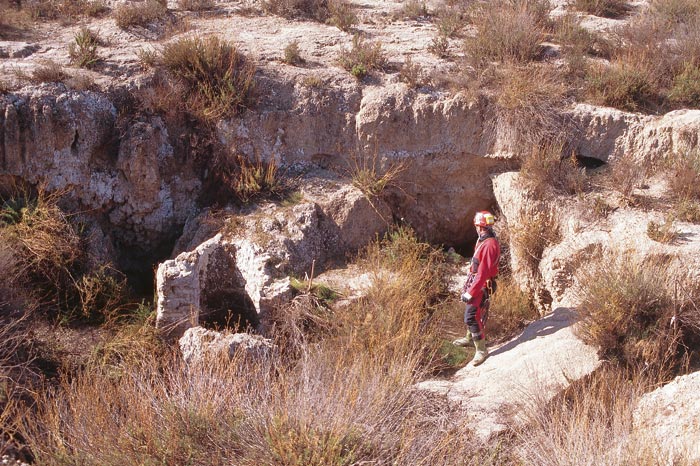
Dissolution doline
A doline is a closed depression of karstic origin that collects the rainwater running off the ground surface and allows its infiltration. More than a thousand small dolines have been catalogued in the Sorbas Karst. In the area of the Cueva del Agua more than one hundred dolines have been counted in only 1 km2, which represents the highest density of cavities in the whole of Spain.
Dolines are usually classified according to how they were formed. Thus, the karst contains collapse dolines, formed by the collapse of the roofs of underground galleries or chambers; dissolution dolines, originating from the dissolution of outcropping gypsum strata, and tectonic dolines, which are related to fractures or joints in the rock. All these types of dolines can be seen in the Sorbas Gypsum Karst.
The dolines are palpable evidence of the evolution of the Sorbas Karst. But which were formed first - the dolines or the caves? Frequently, one tends to think that the evolution of the karst accords to the following model: water infiltrates from the dolines along conduits that become progressively larger due to dissolution, forming large galleries: the caves. However, on occasions, such as in the case of the Sorbas Karst, the reverse can be true: pre-existing galleries and conduits determine the formation and situation of the dolines and sinkholes. This means slightly changing the conceptual model of the karst and considering that what we see on the surface (the dolines) is the result of what lies beneath (the caves) and not the other way around.

Dissolution doline

Collapse (breakdown) doline - Covadura System, Basilio's entrance pit